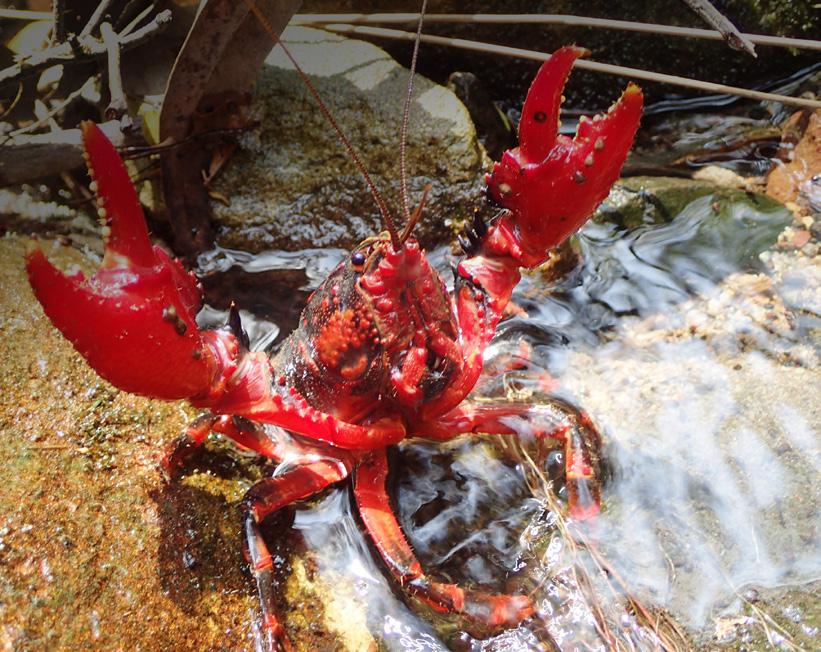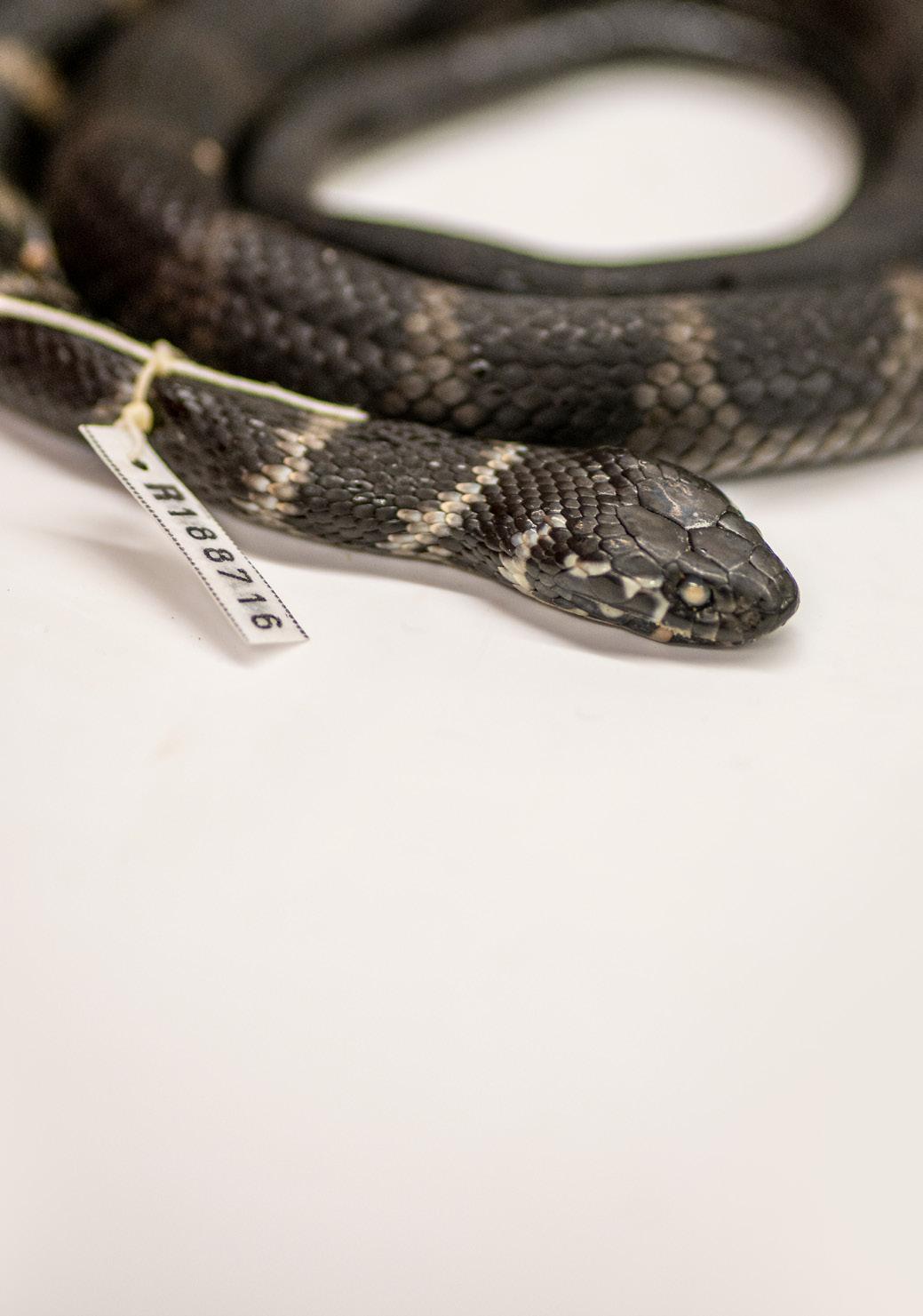
7 minute read
Kids’ feature: Sharks
Top Predators Sharks are most famous for being apex predators. That’s important, but only a few species of sharks actually fill that role. Just as vital are sharks that fill the role of mid-level predators in ecosystems. They keep different parts of the ecosystem in check by controlling the populations of their prey.
smaller sharks
Predators
Filterers
Zooplankton
Phytoplankton shrimp tuna
lantern fish
dinoflagellates (algae) squid
large sharks
lancet fish
copepods amphipods marlin

snapper
sun fish
diatoms (algae)

So, where do sharks fit in? Sitting at the top of the food chain, their existence underpins entire ecosystems.
Sharks prey on smaller predators. In open water, when sharks are removed, their prey overpopulate and reduce the numbers of smaller herbivorous fish, which in turn allows algae to become overgrown. In some circumstances, like a coral reef, this can cause total collapse.
Meanwhile, in seagrass meadows, sharks preserve the habitats of crustaceans and small fish by controlling populations of turtles and dugongs that would overpopulate and overgraze seagrass if sharks were removed. When the seagrass is gone, the ecosystem is destroyed.
Seagrass and seaweed are also major carbon absorbers – the destruction of the ocean’s flora by unchecked populations of herbivores means more greenhouse gases in the atmosphere and a fast-track to global warming.
No species lives in isolation, including humans. Take out sharks and the balance of oceans falls down, as does the fishing industry, the containment of carbon in the water, the Jenga tower of life as we know it.
Sharks is showing at the Australian Museum throughout summer.
All the things we have in our ecosystem are there for a reason.
Prof Colin Simpfendorfer, James Cook University, Queensland
A challenge to learn more and act on what we know
The Australian Museum chose sharks as the topic of the 2022-23 blockbuster exhibition because they give us a clear example of our impact and opportunity in the natural world. As the apex predator for so many ecosystems, their removal will have dramatic consequences for life. Simply removing a top predator can turn rich areas into deserts. On the flip side, the measures needed to save sharks will help many more species and habitats. If we focus on sharks we can understand a global problem and imagine global solutions.
This project was made possible thanks to Create NSW, NSW Department of Primary Industries, Lindblad Expeditions – National Geographic, Minderoo Foundation, Macquarie University and ABC Radio Sydney.
For 450 million years, sharks have dominated Earth’s oceans. Today, their existence has never been under more threat. Our attitudes and our actions will decide their fate.
Sharks
But just how much do you know about these ancient survivors?

Shark myths and facts
The largest fish that has ever lived was a shark
FACT
The Megalodon shark swam in our oceans between about 20 million and 3.6 million years ago. Scientists estimate that the Megalodon grew to 15–20m in length, which is three times longer than the largest recorded great white shark. These figures are based on their teeth, which could reach 18cm in length.
Shark DNA may hold the cure to cancer
FACT
University of Florida scientists have mapped the genome of the Great White Shark and noted that it reveals mutations which protect the animals against cancer and other illnesses. They hope to apply these findings to treat age-related illnesses in humans.
People have always disliked and feared sharks
MYTH
Many First Nations, Torres Strait Islander and Pasifika Peoples have beliefs and cultural practices around honouring sharks, and they are respected as being a vital part of the balance of the environment. In many Pacific Island cultures, sharks are admired for the very things that other people fear them for – their strength, speed and ferocity.
Sharks glow in the dark
FACT
Moller’s Lanternshark – the third smallest known species of shark at 46cm is a bioluminescent, deep ocean shark. Having lights on its underside helps this little shark look like the water’s surface, making it hard for predators to spot it from below.
Sharks can smell blood in the water
FACT
A shark’s sensory toolbox includes an acute sense of smell, which works over long distances. Sharks can detect fish oil and injured prey up to several kilometres away.
Dinosaurs lived before sharks existed
MYTH
The first sharks evolved long before dinosaurs lived on land. But only some of the sharks cruising the world’s oceans more than 400 million years ago looked like sharks as we know them – most were very strange indeed.
k r a Sh d a rhe e m m a H
k r a Sh d a rhe e m m a H
k Zebra Sh kark H a m m a rhe d a Sh a r a m m e e rhe a d Sh r H
B u l l Sh a r k
krah
hale S WMake Start with the Make picture side face down Start with the picture side face down
Make Start with the picture si Shark de face down chatterbox
1. Fold diagonally at corners and unfold
MaMake ke
2. Fold all corners to the centre
Start Start with the picture swith the picture side facide face de down own
3. Turnover and repeat step 2, folding corners in 4. Fold in half vertically and horizontally
1. F c 5. Insert 4 fingers into told diagonally at orners and unfold he 4 tabs to form 4 points
1. Fold diagonally at 2. Fold all corners to corners and unfold the centre
2. Fold all corners to the centre
krah lW e Shak halr e S ahW
Play
1. Colour and fold your shark chatterbox. 2. Hold and move your chatterbox with your thumbs and forefingers under each tab. 3. Think of a fact about sharks. Example, “Sharks are fish” . 4. Say your shark fact and move your chatterbox as you say each word.
1. Fold diagonally at corners and unfold
Play
5. 6. Choose a flap to open. Lift it and find your sha Follow steps 3-5 to play again! 1. Colour and fold your s rk inside! hark chatterbox. 2. Hold and move your chatterbox with your th forefingers under each tab. 3. Think of a fact about sharks. Example, “Shar 4. Say your shark fact and move your chatterb each word. 5. Choose a flap to open. Lift it and find your s
2. Fold all corners to the centre 3. Turnover and repeat step 2, folding corners in
Play 4. F a o n ld in half ve d horizonta rti lly cally 5. Insert 4 fingers into the 4 tabs to form 4 points
1. Colour and fold your shark chatterbox. 2. Hold and move your chatterbox with your thumbs forefingers under each tab. 3. Think of a fact about sharks. Example, “Sharks ar 4. Say your shark fact and move your chatterbox as each word.
1. Fold diagonally at corners and unfold 5. Choose a flap to open. Lift it and find your shark ins
2. Fold all corners to the centre 3. Turnover and repeat step 2, folding corners in
4. Fold in half vertically and horizontally 5. Insert 4 fingers into the 4 tabs to form 4 points
How about colouring me in?
B u l l Sh a r k
DID YOU KNOW? The Great White Shark has the ability to repair its own DNA so is far more tolerant to disease.
krah e S lahW
Play
DID YOU KNOW? Scientists can tell the age of a shark by counting the rings on their backbone.
What you can do to help save the sharks!
Better fishing
Support campaigns that promote better fishing practices.
Ban finning
Write to a local representative asking them to support a ban on shark fin trade in Australia.
Buy sustainable seafood
Buy seafood that has been sustainably sourced, including mussels, prawns and snapper. Find the full list at goodfish.org.au
Avoid
Don’t go to restaurants that sell shark fin soup or buy fish and chips that use shark meat (flake).
Local knowledge
Find out more about First Nations peoples’ local knowledge of the sea and relationship with sharks.
Deter sharks
Support your local beaches that use non-lethal shark deterrents like drones and SMART drumlines.
DID YOU KNOW? On islands near Papua New Guinea, shark callers beckon sharks by using coconut shark rattles and catch them by hand.









